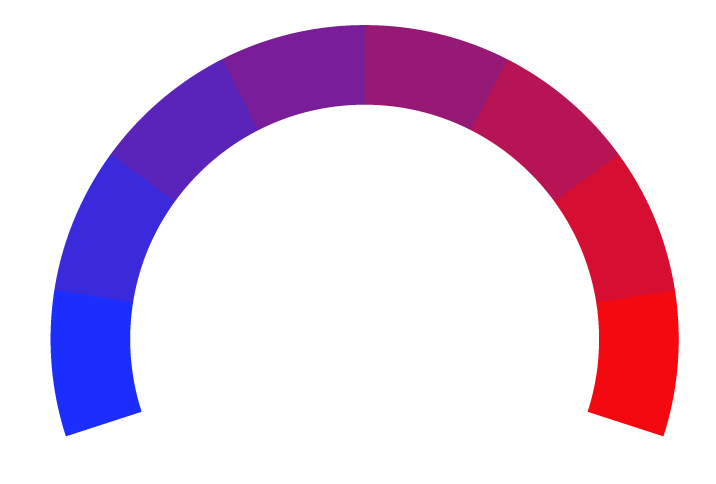Based on the information from CBS News, Donald Trump’s stance on criminal justice leans conservative, emphasizing a “law and order” approach. He advocates for increasing police funding, supports aggressive tactics like “stop and frisk,” and has proposed using federal resources like the National Guard to address urban crime. While Trump signed the First Step Act, his overall policy emphasizes stricter law enforcement and expanded police powers.
Source: CBS News Donald Trump's economic policies generally lean conservative, with a focus on deregulation, tax cuts, and protectionist trade measures. He advocates for lower taxes and reduced regulations to stimulate economic growth and job creation. Trump's approach to trade is more interventionist, favoring tariffs and renegotiating trade deals to protect American industries. On government spending, he supports increased military expenditure while proposing cuts to some social programs. However, his stance on entitlements like Social Security and Medicare is more moderate, as he has pledged to protect these programs. Trump's economic policies aim to prioritize American workers and businesses, reflecting a mix of traditional conservative principles and populist elements.
Source: Trump White House Archives Donald Trump's education policy stance leans conservative, with a strong emphasis on school choice and reducing federal involvement in education. He supports expanding charter schools, private school vouchers, and education savings accounts. Trump advocates for redirecting federal funds to follow students to their chosen schools, including private and religious institutions. He has proposed eliminating or significantly reducing the Department of Education's role. On higher education, Trump favors market-based solutions and increased accountability for colleges. However, he has shown some flexibility on issues like protecting students with disabilities and maintaining popular federal aid programs. Overall, Trump's education policy aligns with traditional conservative principles of local control and free-market approaches to schooling.
Source: ABC News Donald Trump's energy policy stance leans strongly conservative, emphasizing fossil fuel production and deregulation. He advocates for increased oil and natural gas drilling, opposes many renewable energy initiatives, and supports rolling back environmental regulations. Trump aims to achieve “energy dominance“ through expanded fossil fuel production and exports. While he supports nuclear power, he is critical of wind and solar energy, claiming they are unreliable and costly. His approach prioritizes energy independence and low energy costs over climate change mitigation. However, some of his claims about U.S. energy resources and the impacts of current policies are not entirely accurate.
Source: Brookings Donald Trump's stance on government dependency leans strongly conservative. He advocated for tougher work requirements for welfare programs and sought to reduce participation in social safety net programs. Trump signed an executive order in 2018 requiring federal agencies to enforce and strengthen existing work requirements for welfare recipients. His administration proposed rules to tighten eligibility for food stamps and other assistance programs. Trump frequently touted decreases in welfare enrollment during his presidency as a positive accomplishment, framing it as lifting people out of dependency. However, critics argued some policy changes could harm vulnerable populations who rely on government assistance.
Source: Foundation for Research on Equal Opportunity Donald Trump's healthcare stance leans conservative but with some nuances. He supports repealing and replacing the Affordable Care Act, promoting market-based solutions and increased choice in health insurance. Trump advocates for lowering prescription drug prices, expanding health savings accounts, and increasing price transparency. However, he has also pledged to protect pre-existing conditions coverage and has shown openness to maintaining some popular ACA provisions. His policies aim to reduce regulations, promote competition, and shift more control to states and individuals. While generally aligned with conservative principles, Trump's healthcare approach includes some moderate elements that deviate from traditional Republican positions.
Source: ACA Times Donald Trump's stance on immigration leans strongly conservative. He advocates for strict border control, including building a wall along the US-Mexico border and increasing deportations. Trump supports reducing both illegal and legal immigration, implementing travel bans from certain countries, and ending programs like DACA. He favors a merit-based immigration system over family-based immigration. However, Trump has shown some flexibility on certain issues, such as expressing support for a path to citizenship for some undocumented immigrants. Overall, his policies prioritize national security and economic interests over humanitarian concerns, reflecting a “law and order” approach to immigration.
Source: Immigrant Justice Donald Trump's national security stance emphasizes military strength, defense spending, and an "America First" approach. He prioritized defeating ISIS and addressing perceived threats from Iran, but also sought dialogue with North Korea, balancing power projection with a skepticism of prolonged foreign interventions.
Source: Trump White House Donald Trump's stance on reducing the budget deficit appears to be mixed and somewhat inconsistent with traditional conservative fiscal policy. While he implemented tax cuts aimed at stimulating economic growth, these cuts significantly increased the deficit. Trump predicted that economic growth and tariff revenues would help eliminate the budget deficit and pay down debt, but this did not materialize. Instead, the deficit grew substantially during his term, reaching 4.6% of GDP in 2019, up from the 2-3% projected when he took office. His approach combined elements of conservative tax policy with less orthodox ideas about trade and deficit reduction, ultimately resulting in significant deficit growth.
Source: ProPublica Donald Trump's stance on the war on drugs leans conservative, emphasizing a “law and order” approach. He advocates for strict drug laws, rigid enforcement, and harsh penalties for drug traffickers, even proposing the death penalty for high-level dealers. Trump supports building a border wall to reduce drug trafficking from Mexico and has called for ending “sanctuary cities.” However, he has shown some flexibility by signing the First Step Act, which aims to reduce mandatory minimum sentences for nonviolent drug offenders. While maintaining a tough stance overall, Trump has also expressed support for increasing funding for addiction treatment and prevention efforts, reflecting a mix of punitive and public health approaches to drug policy.
Source: Avenues Recovery
| 






















